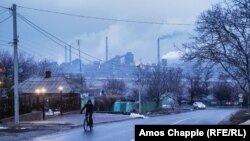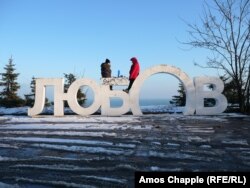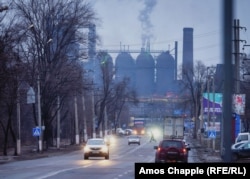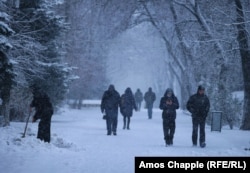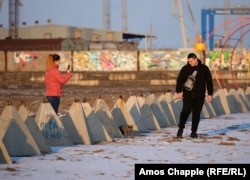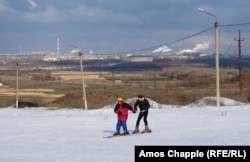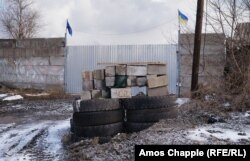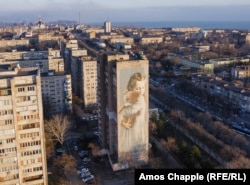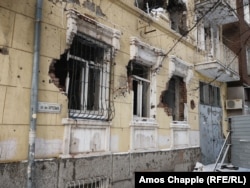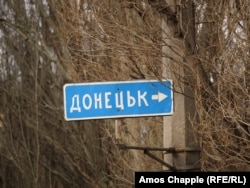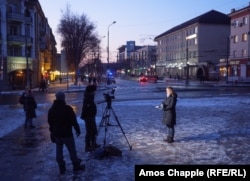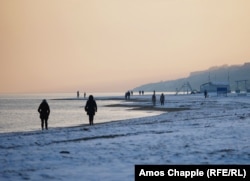In Ukraine's southeastern port city of Mariupol, life continues as normal even as locals say the chances of a Russian invasion are very real.
MARIUPOL, Ukraine -- A coastal city in the southeast of Ukraine, Mariupol lies around 20 kilometers from the line of contact between Russia-backed separatists and the Ukrainian military.
Mariupol’s massive, Soviet-era metallurgical factories and its position as a gateway to the Crimean Peninsula make the city an obvious target if a full-scale Russian invasion of Ukraine were to take place.
After nearly eight years of conflict with Russia-backed separatists, the ongoing war happening within earshot of Mariupol has become something like the weather for locals here -- a topic for discussion, but not particular concern.
Andrei says locals are not overly worried about the talk of an invasion, despite him personally believing the chances of it happening are around 50-50: “We’re hoping that everything will be resolved peacefully."
"No one needs this war," he says, referring to the conflict with Russia-backed separatists, "especially because who we are fighting against? We have relatives there [in the separatist-held areas] and relatives here.… At this point, people are dying for no reason.”
On local news websites, reports of incidents at the front lines are interspersed with news of the Sea of Azov freezing over and other everyday stories. Locals were warned not to throw food to seagulls on the ice, which could lure dogs onto the treacherous surface.
Mariupol still bears scars and memorials from chaotic violence that swept the city in 2014 when parts of eastern Ukraine teetered on the edge of becoming separatist territory.
The mural above depicts Milana Abdurashitova, a girl who was 3 years old when a barrage of rockets fired from separatist territory landed in a marketplace in Mariupol in January 2015. Among the 31 people who died in the attack was Milana’s mother. The little girl was seriously injured and had one leg amputated. She now lives with her grandmother in Kyiv.
Details of what exactly happened inside the police building above in May 2014 remain sketchy, but according to people quoted by The Guardian, pro-Russia separatists had attempted to seize the police headquarters. When the police inside called for backup, the Ukrainian military began hammering the building, killing several people inside. It remains gutted by fire and largely empty.
In reality, the sign above points to a road that ends with a series of Ukrainian military checkpoints, and eventually the front lines between Russia-backed separatists and the Ukrainian military. Donetsk is one of two major cities currently under control of the separatists.
A local hotelier told RFE/RL that while many people have relatives and friends on both sides of the ongoing conflict, he has been told that doing business in the separatist-held territories such as Donetsk is “nearly impossible” without connections or bribery.
The young hotelier, who runs a popular guesthouse in the center of Mariupol, says although high-level corruption remains a problem in government-controlled Ukrainian territory, small businesses in Mariupol such as his are able to operate freely.
For many locals in Mariupol, the only sign of anything out of the ordinary are the foreign journalists now stationed here in anticipation of a potential invasion. The CGTN news crew above attracted a small cluster of onlookers, some of whom snapped selfies as the live report took place.
A new round of diplomacy between Russia and the West over the Ukraine tensions begins on February 7 when French President Emmanuel Macron meets Russia's Vladimir Putin in Moscow. But as high-level talks over Ukraine continue to dominate international headlines, Mariupol locals inured to conflict and the rising and falling of geopolitical tensions carry on life largely as normal.




